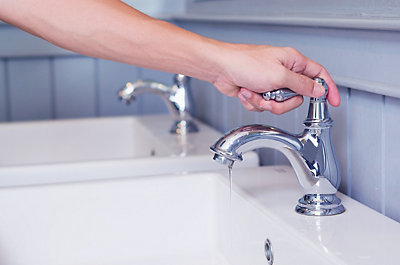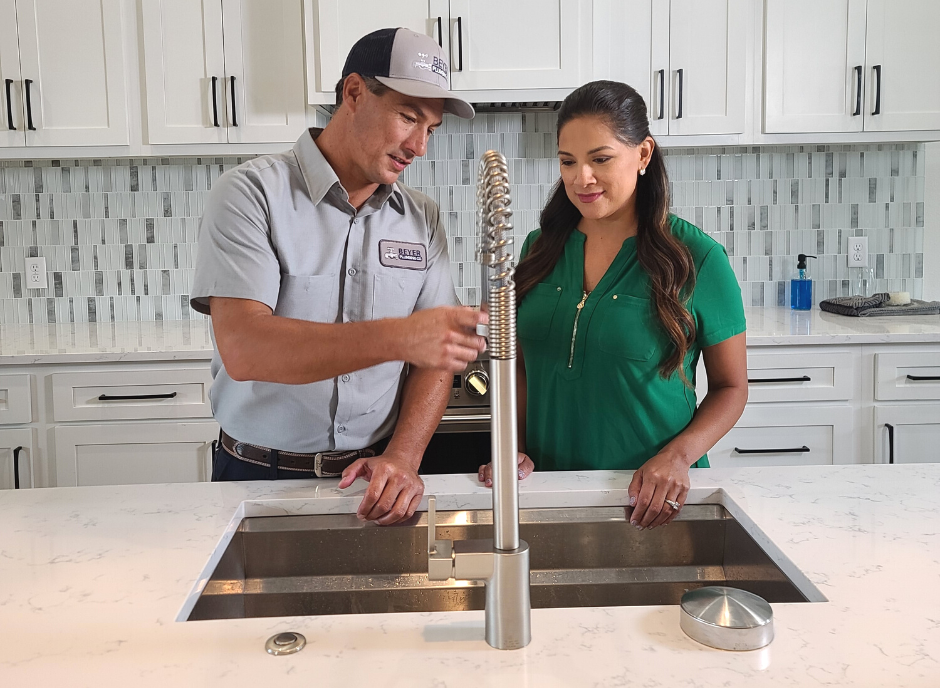What're your insights and beliefs on Why Is It Important To Fix Your Leaking Tap/Faucet??

Leaking faucets could seem like a small hassle, yet their impact surpasses just the nuisance of the sound. From drainage to sustaining unnecessary monetary costs and health and wellness threats, overlooking a dripping faucet can lead to various repercussions. In this short article, we'll explore why it's important to address this common household concern without delay and effectively.
Wastefulness of Water
Ecological Effect
Leaking faucets contribute significantly to water wastefulness. According to the Epa (EPA), a solitary faucet dripping at one drip per secondly can squander more than 3,000 gallons of water each year. This not only pressures water resources yet likewise influences ecological communities and wildlife based on them.
Step-by-Step Overview to Dealing With a Dripping Faucet
Devices Needed
Prior to attempting to deal with a leaking faucet, collect the essential tools, consisting of an adjustable wrench, screwdrivers, substitute parts (such as washers or cartridges), and plumber's tape.
Typical Tap Issues and Their Solutions
Identify the kind of tap and the specific problem creating the drip. Common problems include damaged washing machines, rusty shutoff seats, or defective O-rings. Refer to maker guidelines or online tutorials for step-by-step guidance on repair services.
Financial Expenses
Boosted Water Expenses
Past the ecological effect, leaking faucets can inflate water costs considerably. The gathered wastefulness with time converts right into higher energy expenditures, which might have been avoided with timely fixings.
Prospective Residential Or Commercial Property Damages
Furthermore, prolonged trickling can result in harm to fixtures and surface areas bordering the faucet. Water build-up can cause staining, corrosion, and even structural problems if left unattended, resulting in additional repair work expenses.
Health Issues
Mold And Mildew and Mold Growth
The consistent existence of dampness from a dripping faucet produces an excellent environment for mold and mildew development. These fungis not just jeopardize interior air quality but also posture health dangers, especially for individuals with respiratory problems or allergic reactions.
Waterborne Illness
Stagnant water in dripping taps can become a breeding ground for bacteria and other pathogens, raising the danger of waterborne illness. Pollutants such as Legionella microorganisms flourish in stationary water, possibly bring about severe diseases when consumed or inhaled.
DIY vs. Professional Repair
Benefits and drawbacks of Do It Yourself Repair Service
While some may try to deal with a dripping faucet themselves, do it yourself fixings come with their own set of obstacles. Without correct knowledge and tools, do it yourself efforts can exacerbate the issue or result in insufficient repair work, lengthening the problem.
Advantages of Working With a Professional Plumber
Working with a specialist plumber ensures that the underlying root cause of the leaking faucet is addressed properly. Plumbers have the know-how and devices to diagnose and fix tap issues successfully, saving time and minimizing the danger of further damages.
Environmental Duty
Individual Payment to Conservation
Taking obligation for taking care of leaking taps aligns with wider initiatives towards water conservation and environmental sustainability. Every person's activities collectively make a substantial impact on protecting valuable sources.
Lasting Living Practices
By focusing on punctual repairs and adopting water-saving practices, individuals contribute to sustainable living techniques that profit both existing and future generations.
Safety nets
Routine Upkeep Tips
To avoid dripping faucets, perform regular upkeep such as cleaning up aerators, checking for leaks, and changing worn-out components without delay. In addition, take into consideration installing water-saving devices or updating to much more reliable components.
Importance of Prompt Repairs
Dealing with trickling taps as soon as they're noticed avoids additional water waste and potential damage, inevitably saving both water and cash in the long run.
Influence On Building Value
Understanding of Well-Maintained Property
Preserving a residential or commercial property in good condition, consisting of resolving maintenance issues like dripping faucets, improves its viewed value and charm amongst prospective buyers or renters.
Impact on Resale Value
Features with well-kept plumbing fixtures, including faucets, command greater resale worths in the property market. Resolving leaking taps can contribute to a positive impact throughout building assessments and settlements.
Conclusion
Addressing a dripping tap exceeds mere ease; it's a necessary step towards conserving water, lowering monetary costs, and guarding health and building. Whether with do it yourself repairs or specialist support, acting to fix leaking taps is a tiny yet impactful means to promote responsible stewardship of sources and add to a much healthier, extra sustainable future.
How to Fix a Leaky Faucet: Step-by-Step Repair Guide
A leaky faucet may seem like a simple annoyance, but if it's not fixed promptly, that leak could cost hundreds to potentially thousands. From water damage to mold, mildew, and high water bills, even a tiny leak can be catastrophic if left unattended. Damage like this can even affect the overall value of your home, so it's important to take the right approach for leaky faucet repair. You may need the help of a plumber in some cases, but we've got a few tips you can try on how to fix a leaky faucet before calling the pros.
Four Faucet Types
When you're learning how to fix a leaky faucet, the first step is knowing what kind of faucet you're working with! There are four common types.
Cartridge Faucets
Cartridge faucets come in one- or two-handled varieties. In one-handled cartridge faucets, hot and cold water combines in a single cartridge. In the two-handled versions, hot and cold water are controlled separately and mixed in the faucet.
Ball Faucets
Ball faucets have a single lever you push up and down to adjust the pressure and rotate to change the temperature. A slotted metal ball controls the amount of water allowed into the spout.
Compression Washer Faucets
They're the oldest type of faucet, but they're still used in many homes — especially older ones. Compression faucets have two separate handles that, when turned, raise or lower the washer that seals a water valve. This valve stops water from flowing through the faucet when it is turned off.
Disc Faucets
Disc faucets rarely need to be repaired due to their maintenance-free design. The water flow is controlled by two discs — the upper one raises and lowers against a fixed lower disc, creating a watertight seal. If your disc faucet starts leaking, you may need to replace the seals or clean residue buildup from the inlets.
Fixing a Leaky Faucet
Step 1: Turn Off the Water
Whether you're learning how to fix a leaky bathtub faucet or how to fix a leaky kitchen faucet, always turn off the water supply to your working area when you're fixing a leak. The last thing you want is a flood added to your list of things to fix.
Look for the shutoff valves below your sink or around the tub and turn them clockwise to stop the water flow. If your faucet doesn't have shutoff valves, you may need to turn off the water for the whole house. Check to make sure it's off by turning the faucet on. If nothing comes out, you're ready to start the repair.
Step 2: Take Apart the Faucet
How you disassemble your faucet depends on the type of fixture you have. You can use a flathead screwdriver to remove the caps on top of the handle or handles for cartridge and compression faucets. Inside, you should see handle screws. Unscrew these with a screwdriver to remove the handle.
Disc- and ball-style faucets will typically have an inlet screw near the handle, and removing that will reveal the interior of the faucet.
Detach the Valve Stem
For cartridge- and compression-style faucets, you'll see the inner valve stem or cartridge once you remove the faucet handles. If you have a compression faucet, unscrew the brass valve stem. If you have a cartridge faucet, pull out the cartridge. If your cartridge has been in place for a while, it may require some tools or extra force to remove it due to mineral deposits.
Examine and Replace Parts
Once you've removed the parts, check them out to confirm what needs to be replaced. You may see corroded rubber washers, O-rings, stems, or cartridges. On a ball-style faucet, check the seats and springs for damage.
If you need to repair a leaky disc faucet, check the inlet and seals on the lower disc.
Once you determine what parts must be replaced, visit your local hardware store. Bring the damaged parts with you to ensure you can purchase the correct components to replace them.
Clean Valves and Faucet Cavity
If you've removed a stem or cartridge, you may notice mineral buildup in the faucet's threads. Use white vinegar to clean the valve seat by soaking it for a few minutes, then scrub it away with a soft toothbrush and rinse with warm water. You can also clean the interior of the faucet in the same way.
Reassemble the Faucet
Once your faucet is cleaned and the required parts have been replaced, it's time to reassemble it. Put the pieces back together and slowly turn the water supply back on. Doing this slowly is crucial because too much initial water pressure can damage the new hardware you've just installed.
https://homewarranty.firstam.com/blog/how-to-fix-leaky-faucet

Do you appreciate more info about What Causes Leaky Faucets & How To Fix Them? Try leaving a remark down the page. We will be pleased to see your opinion about this blog posting. We hope that you visit us again in the near future. In case you appreciated our post if you please be sure to share it. Thanks for your time. Return soon.